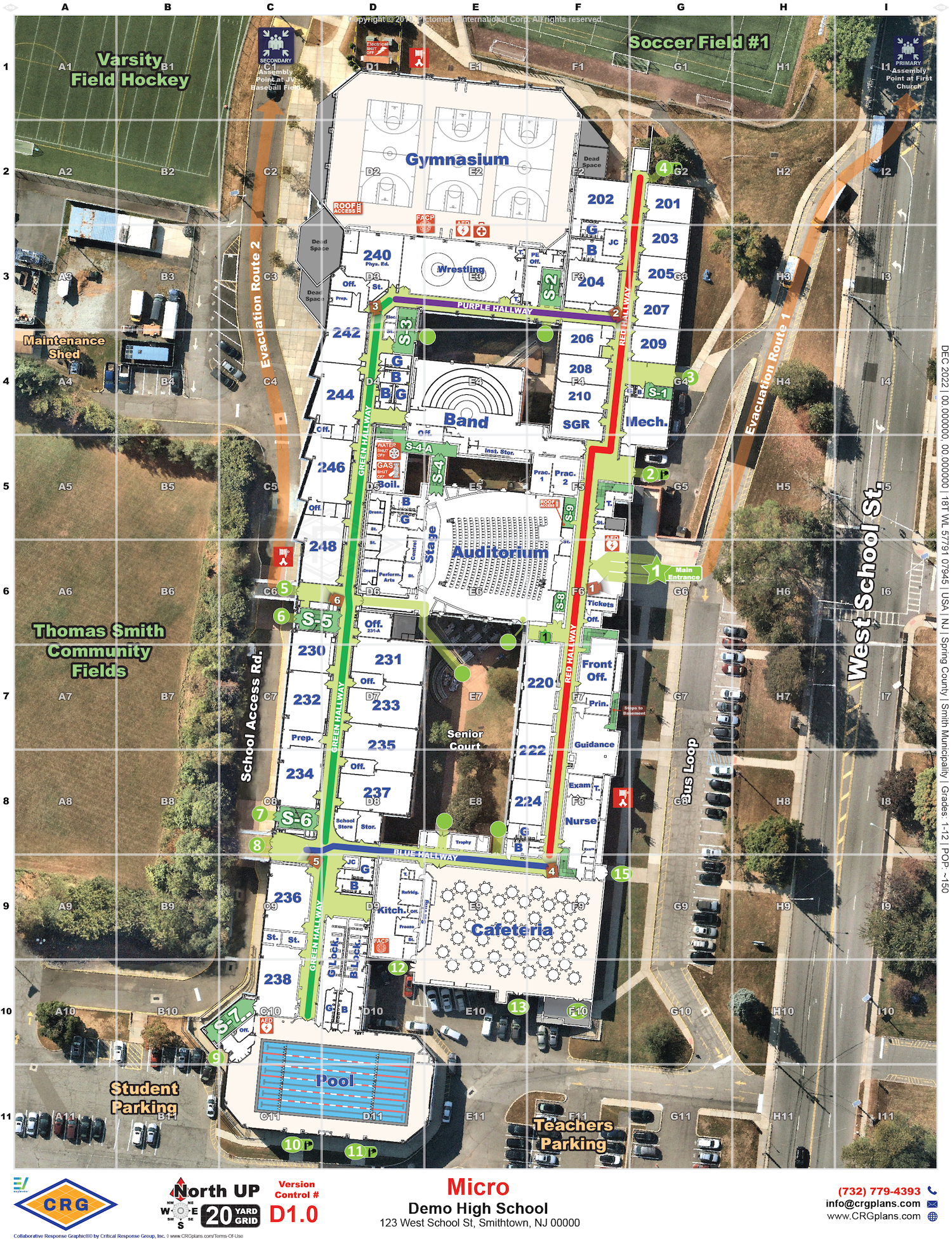See how Critical Response Group can streamline your application process and maximize the value of your dollars with our proven approach to critical incident mapping data.
Navigate Funding For Your Mapping Initiatives
Contact Our Regional Specialist

Zach Querry
Regional Director

Critical Response Group Meets All Criteria Under Senate Bill 2426 for Critical Incident Mapping Data
Providing law enforcement and first responders accurate information to help improve response time and navigate to the scene effectively. Our school mapping solutions meets all legislation criteria:
- Compatible with all platforms and applications used by local, State, and federal law enforcement authorities.
- Provided in a printable format.
- Verified for accuracy through an annual walkthrough of school buildings and school grounds.
New Jersey’s Trusted Provider of Critical Incident Mapping Data
Critical Response Group is setting the gold standard for critical incident mapping data across the country, and partners directly with and is endorsed by the New Jersey State Association of Chiefs of Police.





Integrating With the Tools New Jersey Schools Trust
Our critical incident mapping data seamlessly integrates into the technology platforms educational institutions across New Jersey deploy and trust, which ensures that our maps are always there when needed.
Still Have Questions?
Here are some answers to the most commonly asked questions.
What is critical incident mapping data and how do they work?
Critical incident mapping data, often referred to as Collaborative Response Graphics® (CRGs), combine a gridded reference system, high-resolution imagery, floor plans that are verified by a on-site walk through, and critical features to create accurate and real-life depictions of facilities and their surroundings. The graphics can be provided in electronic or digital form to assist first responders in an emergency including, but not limited to: aerial images of schools, floor plans, including room and suite numbers, building access points, locations of hazardous materials and utility shut-offs, and any other relevant location information. By providing law enforcement and first responders with crucial information, they enhance response time and help navigate the scene efficiently.
Why is an onsite walk-through essential for critical incident mapping data?
The only way to verify accuracy of a school map is to walk-through the entire site and make changes and updates as needed. Schools change every year – structurally, in the labeling of rooms, and in the locations of critical items like AEDs and cameras. Floor plans for the building are often not kept up with these changes. First responders describe location over the radio by what they see, so maps need to match the layout and labeling of the facility. Maps also need to capture how students and staff naturally talk about locations around the building – even if it is not on a sign on the wall or labeled on blueprints – as they will use this language when describing their location under stress. All this data can be only captured during an in-person site visit.
Who benefits from critical incident mapping data?
Critical incident mapping data benefit both law enforcement and educational institutions. For law enforcement, critical incident mapping data enable coordination and collaboration, resulting in faster response times and decisive actions during crises. Educational institutions can enhance their emergency preparedness with critical incident mapping data, ensuring efficient action plans and minimizing response time.
Who is required to submit critical incident mapping data in New Jersey?
New Jersey Senate Bill 2426 requires boards of education and chief administrators of nonpublic schools to provide critical incident mapping data for all schools and school grounds to local law enforcement authorities. In the case of a school building located in a municipality in which there is no municipal police department, a copy of the blueprints and maps is required to be provided to an entity designated by the Superintendent of State Police. A board of education or chief school administrator of a nonpublic school is also required to provide revised copies to law enforcement authorities or a designated entity any time there is a change to the blueprints or maps.
Do you have successful case studies implementing critical incident mapping data?
Yes, there have been successful case studies in various states and districts. For example, Wisconsin schools received $5 million in funding for crisis response mapping data, Delaware and New Jersey had all of their public and private schools mapped and Virgina has had over 90% of their schools mapped by Critical Response Group.
Ready to Get Started on Your Critical Incident Mapping Data?
Maximize the value of your dollars with the expertise of CRG and our proven approach to critical incident mapping data. Let us help you through the process.
